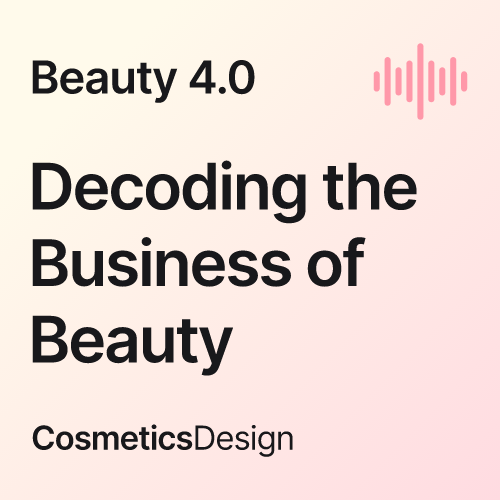Cosmeceuticals focus
Health claims could drive beauty foods market
companies to tout the beauty benefits of their products, since
cosmetics are not generally subject to the same stringent rules as
foods and supplements, says an analyst.
The term cosmeceuticals applies to products that bridgs the gap between cosmetics and pharmaceuticals.
It is used to refer to topical as well as oral products, in the latter instance products are also known as beauty foods.
Other terms include dermaceuticals, beauty supplements, and skinceuticals.
This year is the first time that sessions on cosmeceuticals have been included in the programme at the Vitafoods conference, organised by Leatherhead International, which session chair Dr Joerg Gruenwald of Analyse and Realise said is an important statement that underscores the importance of the product category.
He noted, while walking the trade show floor, that "every second stand" had some product that mentions weight loss or beauty.
Gruenwald has noticed a clear switch to a beauty focus in recent years, although there have been products marketed on a beauty platform for many years.
For example, Merz Spezialdragees has been available since 1964 and Imedeen products for around 15 years.
He said the explanation could well be that it is easier to make claims for cosmetics than it is for foods.
Indeed, some topical products make very strong efficacy claims in their marketing materials - only for the small print to reveal that studies were not controlled and involved a very small sample of women.
Major players in the food industry are making considerable investments into foods to boost appearance, such as Nestle with its Inneov product, in collaboration with L'Oreal, and Dannone's yoghurt products marketed for slimming and beauty.
And Dr Gruenwald believes that such products are only the start of the market.
The world cosmeceuticals market is estimated at US $60bn, with a growth rate of 8 to 12 per cent.
The new health claims regulations in Europe could spur the market into activity.
Faced with tighter controls, companies could still seek to leverage consumer appeal by communicating benefits that are not strictly health related.
Health and beauty are closely tied.
For example, obesity has health implications but is also a matter of appearance.
Moreover, skin and outward appearance can also be an indication of inner health and wellness.
But Gruenwald said: "A beauty claim should not be about health, if it does not involve any health issue.
We want to keep some freedom of advertising."
But again, when it comes back to science, there is a big gulf between credible and incredible products.
He drew attention to an anti-wrinkle jam called Norelift from Laboratoires Noreva, for which research data could not be found.
In the case of functional marshmallows by Eiwa Confectionery in Japan, it is questionable whether oral intake of collagen would have any effect on skin, and again, there is no evidence to support the claim.
In terms of the geographical market for cosmeceuticals, Japan is by far the biggest market, valued at $6bn to $8bn dollars.
The US is estimated at around $5bn to $6bn, and the EU $3bn to $5bn Gruenwald also highlighted interesting differences between the genders.
For women, the prime target is those who are already ageing - that is, 50-years plus.
But in men it is the 25 to 34 age group that is showing the most interest in products for outward appearance - "single men on the run to find the right date" .

![Indus Valley is working to corner 30% of India's online premium boxed hair colour market. [Indus Valley]](/var/wrbm_gb_food_pharma/storage/images/_aliases/wrbm_tiny/publications/cosmetics/cosmeticsdesign-asia.com/article/2024/07/26/indus-valley-aims-to-secure-30-of-india-s-online-premium-hair-colour-market-with-organic-offerings/17594932-5-eng-GB/Indus-Valley-aims-to-secure-30-of-India-s-online-premium-hair-colour-market-with-organic-offerings.jpg)
![[Getty Images]](/var/wrbm_gb_food_pharma/storage/images/_aliases/wrbm_tiny/publications/cosmetics/cosmeticsdesign-asia.com/china/china-focus-latest-developments-in-china-s-booming-beauty-market25/17606695-1-eng-GB/China-focus-Latest-developments-in-China-s-booming-beauty-market.jpg)
![Kosé has launched makeup brand Visée in Singapore as part of plans to reinforce its position in SEA. [Visée]](/var/wrbm_gb_food_pharma/storage/images/_aliases/wrbm_tiny/publications/cosmetics/cosmeticsdesign-asia.com/headlines/business-financial/visee-singapore-kose-aims-to-enhance-brand-visibility-in-sea-with-new-launch/17587264-1-eng-GB/Visee-Singapore-Kose-aims-to-enhance-brand-visibility-in-SEA-with-new-launch.jpg)
![ble C&C is set on reinforcing its competitiveness in China’s beauty market. [Missha]](/var/wrbm_gb_food_pharma/storage/images/_aliases/wrbm_tiny/publications/cosmetics/cosmeticsdesign-asia.com/headlines/business-financial/able-c-c-aims-to-strengthen-competitiveness-in-china-through-online-expansion-kol-collabs/17591626-1-eng-GB/Able-C-C-aims-to-strengthen-competitiveness-in-China-through-online-expansion-KOL-collabs.jpg)

![LG H&H genetic study says 23 genetic regions affect natural skin tone. [Getty Images]](/var/wrbm_gb_food_pharma/storage/images/_aliases/wrbm_tiny/publications/cosmetics/cosmeticsdesign-asia.com/article/2024/07/23/lg-h-h-discovery-of-genetic-skin-tone-factors-in-east-asians-potentially-key-to-skin-radiance-developments/17587210-1-eng-GB/LG-H-H-discovery-of-genetic-skin-tone-factors-in-East-Asians-potentially-key-to-skin-radiance-developments.jpg)

![DR.CI:LABO expects brand-supplier partnerships gain more public prominence as consumers interest in skin care grows online. [Dr.Ci:Labo]](/var/wrbm_gb_food_pharma/storage/images/_aliases/wrbm_tiny/publications/cosmetics/cosmeticsdesign-asia.com/article/2024/07/22/brand-supplier-partnerships-will-come-to-the-fore-amid-the-online-skin-care-landscape-dr.ci-labo/17576755-1-eng-GB/Brand-supplier-partnerships-will-come-to-the-fore-amid-the-online-skin-care-landscape-DR.CI-LABO.png)